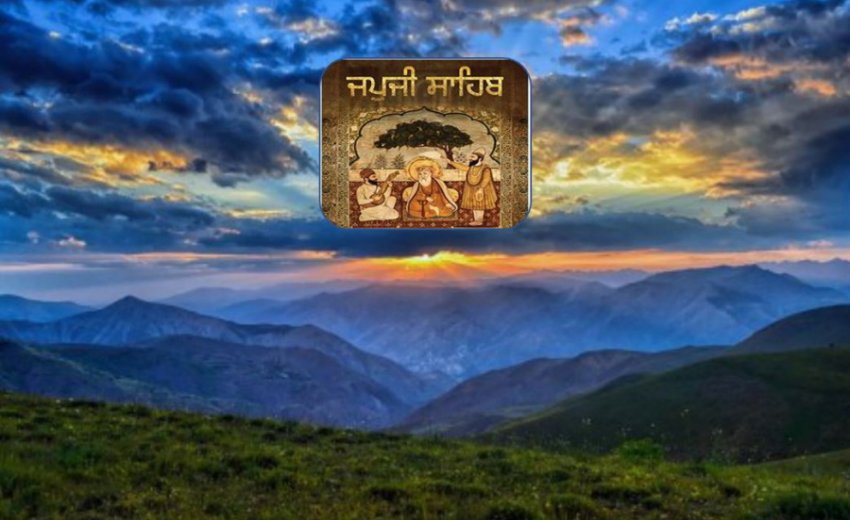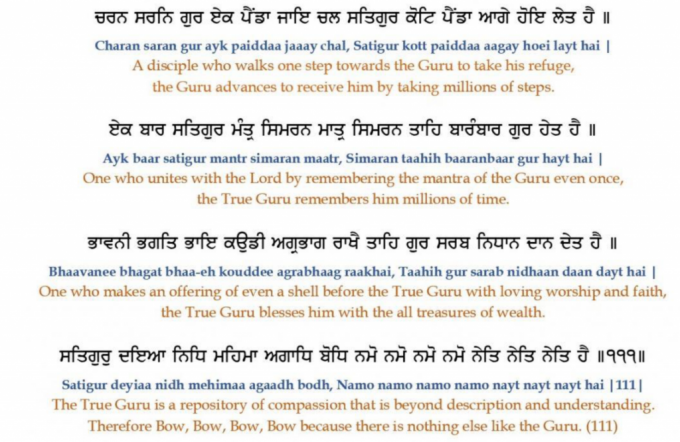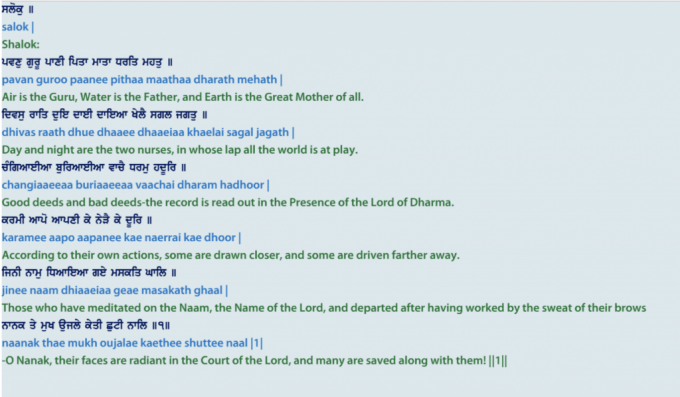July 8, 2019: When my mother-in-law passed away quite quickly and unexpectedly, I found myself suffering an existential crisis. It was my first experience ever losing someone close in my family, whom I knew well and had a relationship with. Before her passing, death was emotionally foreign to me and I simply regarded it as matter of fact, as a part of life. But this time, I was hit hard by the experience of seeing someone in pain, of helplessness and hopelessness, feeling her void in our family, and feeling left alone to try and make sense of it all without much support. Attachments, identity, life purpose, mortality, legacy, it all came up for me when dealing with her death. What was my purpose? What is the meaning of life? I turned to the tools I know best…the teachings of Kundalini Yoga and Sikh Dharma for support and guidance and applying them to this life experience.
This period in my life also coincided with the first time I was to offer a Kundalini Yoga Level 1 Teacher Training at my studio, and I felt the need to be able to hold the space for our students and to feel stronger emotionally. My intuition led me to commit to a year of daily Sadhana, which included Japji Sahib, “The Song of the Soul”.
As a Punjabi born Sikh, living all but my first 6 months in Canada, it was Kundalini Yoga at the age of 27 that connected the dots for me and allowed me to understand the Sikh way of life, rising in the amrit vela, bani, bana, etc. I jokingly refer to myself as the “Lost & Found” Sikh, as I had lost connection to my culture, language and religious practice, and am regaining it thanks to the efforts of Yogi Bhajan and the Western Sikhs, whom I found easier to relate to as they were more heart-centered in their teachings of Sikhi and appeased my logical Western mind, than the dogmatic leaders in the community I grew up with. So, I began with the recording and booklet put together by Guru Raj Kaur called Japji Song of the Soul, and I started reading along aloud in Gurmukhi with the Tantric track.
I continued daily for 3 months and came to appreciate the rhythmic and rhyming nature of this sacred poetry. However, one day while traveling, I realized that I had forgotten to pack my iPod…how was I going to recite Japji, I only had my booklet! To my amazement, I was able to read from my booklet aloud and maintain the same rhythm and melody as if I had the recording on. Then one day, I had my iPod but had forgotten my booklet, so I attempted to join along with the audio without having the written words handy and was successfully able to keep up! I feel that those times of “forgetfulness” whereby I was missing my tools for Japji, was the Guru’s way of showing me that I was capable of moving forward independently. At a Sadhana once during a retreat, a student next to me observed that I was saying Japji without the booklet and asked whether I had been practicing Japji my whole life and she was surprised to hear that I had only been practicing it for a year. I explained to her that the beauty of the Naad is in its structure and that with practice and deep listening, the recitation becomes a flow. She found it encouraging to know that what seemed impossible was possible!
Today, I still recite out loud but now with a musical recording by Chardikala Jatha available on the Sikhnet app called Gurbani Media Center. I believe with more practice that I should be able to recite it from memory soon enough; however, I currently enjoying diving deeper into understanding the meaning of the stanzas/paurees and applying the effects of them by picking one, and reciting it eleven times a day to help me with a challenge or a goal that I am working on. I am using the poetic English translation in the book written by Ek Ong Kaar Kaur Khalsa and the Japji app by Sikh Dharma, which comes in handy when I don’t have access to wifi.
Quite soon after I began my daily practice of Japji Sahib, I started to notice that my life started to accelerate and shift in ways that I never imagined or dreamed possible. It was like the foundation of my being and life was being shaken and remodeled and I was being lovingly held throughout it all. Opportunities, challenges, people and relationships came forth as I needed them; those that I didn’t need or align with my values left and likewise, I was able to show up for people as they needed me and my skillset. I could feel my neutral mind being developed, as I became less reactive and more at peace with who I am and what the situation brought forth. Over the years, I have become more keenly aware of where I need to put my energy and not to get distracted by the Maya of life. More and more I am aware of my heart’s cravings for the simplicities of life, stillness in deep listening and finding the beauty within every moment of life. I am okay with being vulnerable, with being mortal, with being open, with being fragile, with being of service, with being misunderstood, with being hurt, with being challenged, with being a leader, with being love. I’m okay with all of this play called LIFE!
The gift in my mother-in-law’s passing was that it brought me closer to the Guru, and it’s written in the Siri Guru Granth Sahib that when you take one step toward the Guru, the Guru takes a million steps to receive you.
Her transition was a reminder to me to live each day as if it were my last, and to align my day to serve my soul. This is why currently for me, my favorite part of Japji Sahib is the very end, called the Shalok, here’s a version of it by Benjamin Steelewhich I find humbly beautiful and empowering. I find that the Shalok acts as a compass for my soul, in that final verse is a description for how to go about my day, to honor the role of the tattvas, to serve on a Dharmic path in my role as a teacher, to work honestly, and by remembering the light in me and sharing that light, I act as a radiant lighthouse for others who have forgotten the light and help them to remember.
I’d like to take this opportunity to thank all those involved in their role for being a lighthouse for me. As you see in this article, I’ve listed quite a few tools, resources and people who by the sweat of their brow, have served us on this path. Their valuable work reaches so many and is possible with our collective support, so that together we can serve. Tithing is the way we can show our appreciation and support either financially or with our time. If your life has been touched by the teachings and the infrastructure put in place to spread them, then please pay it forward by contributing Dasvandh to Sikh Dharma, a donation to Library of Teachings, and Sikhnet.
Waheguru Ji Ka Khalsa, Waheguru Ji Ki Fateh!
Navjit Kaur lives in Ottawa, Canada and is the founder and director of the award-winning Yoga & Tea Studio she opened in 2008. Born in India, but having lived her whole life in Canada, her study and practice of yoga over 15 years has allowed her to embrace the wisdom that both the East and West offer to the practice. As a mom, wife, Professional Engineer, and entrepreneur, Navjit Kaur enjoys sharing yoga philosophy and techniques in her classes and relating them to modern day issues such as stress, health and relationships. Navjit Kaur has been teaching since 2005 and is an Associate Teacher Trainer within the Aquarian Academy. Her approach is to make the teachings accessible and relevant, and to provide an opportunity for every person in her class to be challenged, heal and to excel!
Resources
Japji Sahib, Song of the Soul by Guru Raj Kaur
Japji Sahib English translation by Ek Ong Kar Kaur Khalsa
Japji App by Sikh Dharma International
Gurbani Media Center by Sikhnet
Japji Sahib, Musical Recitation by Chardhi Kala
Effects of Paurees of Japji Sahib
Musical Recitation of the Slok by Benjahmin Steele
Want to donate?
Sikh Dharma International
SikhNet
Library Of Teachings




